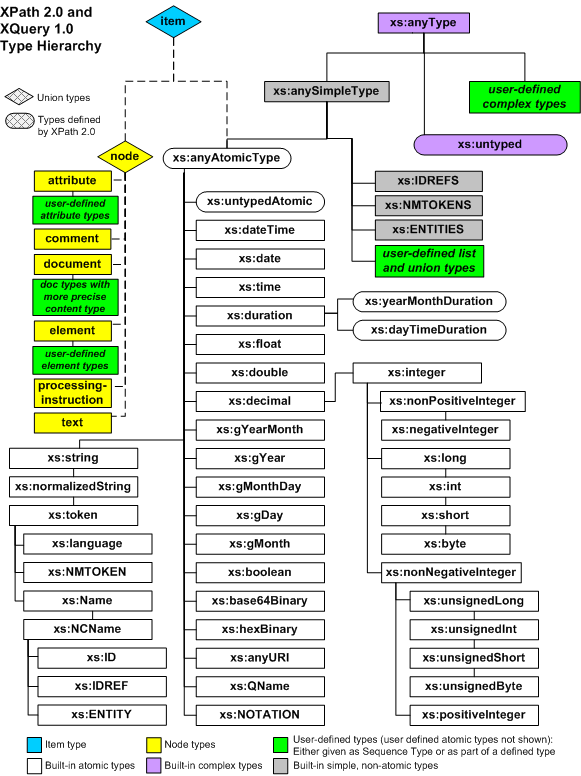I would like to understand why on .NET there are nine integer types: Char, Byte, SByte, Int16, UInt16, Int32, UInt32, Int64, and UInt64; plus other numeric types: Single, Double, Decimal; and all these types have no relation at all.
When I first started coding in C# I thought "cool, there's a uint type, I'm going to use that when negative values are not allowed". Then I realized no API used uint but int instead, and that uint is not derived from int, so a conversion was needed.
What are the real world application of these types? Why not have, instead, integer and positiveInteger ? These are types I can understand. A person's age in years is a positiveInteger, and since positiveInteger is a subset of integer there's so need for conversion whenever integer is expected.
The following is a diagram of the type hierarchy in XPath 2.0 and XQuery 1.0. If you look under xs:anyAtomicType you can see the numeric hierarchy decimal > integer > long > int > short > byte. Why wasn't .NET designed like this? Will the new framework "Oslo" be any different?
